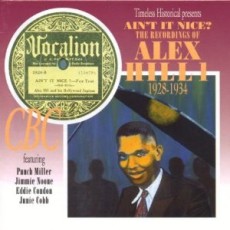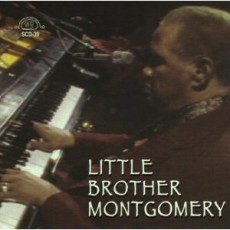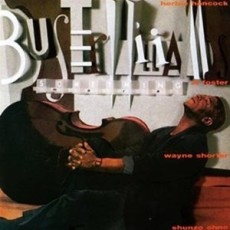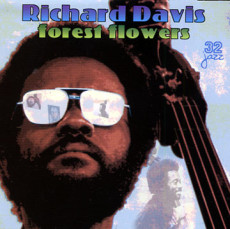
Daily Dose Of Jazz…
Alex Hill was born on April 19, 1906 in Little Rock, Arkansas to a minister father and pianist mother who taught her child prodigy to play. Defying his father’s wishes the young pianist delved into secular music and while studying at Shorter College met Alphonse Trent and began arranging for him. After graduating in 1922 he worked with several territory bands including Fats Waller and Terence Holder.
From 1924 to 1926 Alex led his own ensemble, then played with Speed Webb, and in 1927 he spent time with Mutt Carey’s Jeffersonians and Paul Howard’s Quality Serenaders. Later that same year Hill relocated to Chicago and held a job as an arranger for the Melrose Music Publishing Company, while simultaneously arranging for the Carroll Dickerson Orchestra. He began recording as a leader and a sideman in 1928 and continued through 1934.
By 1930, prior to a move to New York City, Alex had played with Jimmy Wade, Jimmie Noone and Sammy Stewart. During his time in New York he arranged for Paul Whiteman, Benny Carter, Claude Hopkins, Andy Kirk, Eddie Condon and Duke Ellington among others. Additionally, he became staff arranger for the Mills Music Company. Reuniting with Fats Waller the two did a show together in New York called “Hello 1931”, and accompanied Adelaide Hall.
Hill again put together his own group in 1935, but after playing the Savoy Ballroom he disbanded the ensemble due to his battle with tuberculosis. Moving back to Little Rock, pianist and arranger Alex Hill passed away in February 1937 at the age of 30.

Daily Dose Of Jazz…
Eurreal Wilford “Little Brother” Montgomery was born on April 18, 1906 in the sawmill town of Kentwood, Louisiana across Lake Pontchartrain from New Orleans where he spent much of his childhood. As a child he looked like his father, Harper Montgomery, and was called Little Brother Harper. The name evolved into Little Brother Montgomery, a nickname that stuck. He started playing piano at the age of 4, and by age 11 he was playing at various barrelhouses in Louisiana.
Montgomery, largely self-taught, was an important blues pianist with an original style; however, he was also quite versatile working in jazz bands including larger ensembles that used written arrangements. Although he did not read music, he learned band routines by ear and once through an arrangement he had it memorized. He was a singer with an immediately recognizable, rather affecting wobble: an oral historian as full of musical anecdotes as his musical influence and frequent visitor, Jelly Roll Morton.
Early on he played the Black lumber and turpentine camps in Louisiana and Mississippi, then with the bands of Clarence Desdunes and Buddy Petit. He first went to Chicago from 1928 to 1931, making his first recordings and from 1931 through 1938 he led a band in Jackson, Mississippi. By 1942 Montgomery moved back to Chicago, toured other cities and Europe with a repertoire alternating between blues and traditional jazz. During the ‘60s his fame grew and he continued to make many recordings, including on his own record label, FM Records.
Never straying too far from the blues Montgomery appeared at many blues and folk festivals during the following decade and was considered a living legend, a link to the early days of blues and New Orleans. Little Brother Montgomery passed away on September 6, 1985 in Champaign, Illinois.

Daily Dose Of Jazz…
Charles Anthony Williams was born April 17, 1942 in Camden, New Jersey. His father was a bassist and his teacher, preparing lessons for him each day, stringing his bass and demanding practice everyday after school.
Nicknamed Buster, he started his professional career in Philadelphia in 1959 working with Jimmy Heath, then went on to play and record with the Gene Ammons – Sonny Stitt quintet from 1960-61. Leaving the quintet he moved to Los Angeles and played behind Betty Carter, Sarah Vaughan and Nancy Wilson through the decade. He also worked with The Jazz Crusaders, Bobby Hutcherson/Harold Land Quintet and Miles Davis.
In 1969, Williams moved to NYC, joined the Herbie Hancock Mwandishi Sextet and for the next three years doubled on acoustic and electric bass. In the ‘70s he worked with Mary Lou Williams and the Ron Carter Quartet and in 1975 released his debut album “Pinnacle”. Since the ’80s, Williams has appeared as a sideman on a significant number of sessions with notable jazz instrumentalists and vocalists, Chet Baker, Kenny Barron, Dexter Gordon, Carmen McRae, Illinois Jacquet, Frank Morgan, McCoy Tyner, Shirley Horn, Woody Shaw, Stanley Cowell and the list continues.
With opportunities to lead his own sessions being rare, in 2008 Buster began releasing a series of live albums exclusively for download through his company, Buster Williams Productions. A solid supportive player, he has made subtle swing, a precise rhythm and superb technique the landmark of his playing.
More Posts: bass

Daily Dose Of Jazz…
Junko Onishi was born April 16, 1967 in Kyoto, Japan and studied piano at Berklee College of Music. She then moved to New York City where she played with Joe Henderson, Betty Carter, Kenny Garrett and the Mingus Dynasty but has also worked with Jackie McLean, Holly Cole, Billy Higgins and many others.
Primarily playing in the post-bop genre, Junko cites her influences as Duke Ellington, Thelonious Monk and Ornette Coleman but one can hear McCoy Tyner, Kenny Kirkland and Mulgrew Miller’s influences in her playing. As a leader she has recorded nine albums on Blue Note Records label Somethin’ Else.
Choosing to study and practice she stopped performing in the late Nineties and when her mentor, Jaki Byard passed away she stopped playing completely for two years. Redeveloping her technique Onishi returned to playing and started a gym regimen to help her cope with the physical rigors of playing.
She appears in the 1997 documentary “Blue Note: A Story Of Modern Jazz playing the song “Trinity” and “Quick” from her album Play, Piano, Play: Junko Onishi Trio in Europe. In 2009 she released her Blue Note album “Musical Moments” followed by her Verve large band project “Baroque”. She continues to perform, record and tour worldwide.
More Posts: bandleader,composer,piano

Daily Dose Of Jazz…
Richard Davis was born in Chicago, Illinois on April 15, 1930 who began his musical career as a singer with his brothers. Davis sang bass in his family vocal trio in addition he began studying the double bass in high school with his music theory and band director, Captain Walter Dyett. After graduation, he went on to study the double bass with Rudolf Fahsbender of the Chicago Symphony Orchestra while attending Vandercook College.
After college, Davis performed in dance bands making a name for himself around Chicago, making connections that led him to pianist Don Shirley. In 1954 he and Shirley moved to New York City, performed together until 1956, when he began playing with the Sauter-Finegan Orchestra.
Richard then toured and recorded as part of Sarah Vaighan’s band, worked with Dorothy Ashby, Jaki Byard, Booker Ervin, Charles Lloyd, Candido Camero, Jimmy Forrest and Thad Jones/Mel Lewis Jazz Orchestra among others. Some of his most famous contributions were Eric Dolphy’s 1964 “Out To Lunch”, Andrew Hill’s “Point Of Departure” and Van Morrison’s “Astral Weeks”, Laura Nyro’s “Smile” and Bruce Springsteen’s “Born To Run”.
He has recorded fifteen albums as a leader and over a hundred as a sideman. A long-time educator, he has been a professor at the University of Wisconsin-Madison since 1977 where he teaches bass, jazz history, and improvisation. Bassist Richard Davis received the 2014 NEA Jazz Masters award.
More Posts: bass


